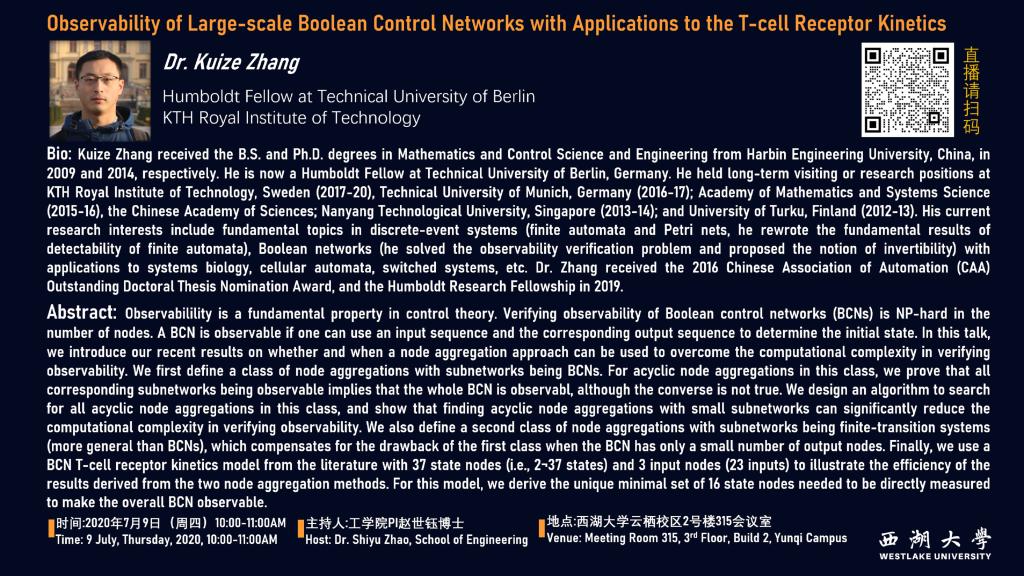
Bio:
Kuize Zhang received the B.S. and Ph.D. degrees in Mathematics and Control Science and Engineering from Harbin Engineering University, China, in 2009 and 2014, respectively. He is now a Humboldt Fellow at Technical University of Berlin, Germany. He held long-term visiting or research positions at KTH Royal Institute of Technology, Sweden (2017-20), Technical University of Munich, Germany (2016-17); Academy of Mathematics and Systems Science (2015-16), the Chinese Academy of Sciences; Nanyang Technological University, Singapore (2013-14); and University of Turku, Finland (2012-13). His current research interests include fundamental topics in discrete-event systems (finite automata and Petri nets, he rewrote the fundamental results of detectability of finite automata), Boolean networks (he solved the observability verification problem and proposed the notion of invertibility) with applications to systems biology, cellular automata, switched systems, etc. Dr. Zhang received the 2016 Chinese Association of Automation (CAA) Outstanding Doctoral Thesis Nomination Award, and the Humboldt Research Fellowship in 2019.
Abstract:
Observabilility is a fundamental property in control theory. Verifying observability of Boolean control networks (BCNs) is NP-hard in the number of nodes. A BCN is observable if one can use an input sequence and the corresponding output sequence to determine the initial state. In this talk, we introduce our recent results on whether and when a node aggregation approach can be used to overcome the computational complexity in verifying observability. We first define a class of node aggregations with subnetworks being BCNs. For acyclic node aggregations in this class, we prove that all corresponding subnetworks being observable implies that the whole BCN is observabl, although the converse is not true. We design an algorithm to search for all acyclic node aggregations in this class, and show that finding acyclic node aggregations with small subnetworks can significantly reduce the computational complexity in verifying observability. We also define a second class of node aggregations with subnetworks being finite-transition systems (more general than BCNs), which compensates for the drawback of the first class when the BCN has only a small number of output nodes. Finally, we use a BCN T-cell receptor kinetics model from the literature with 37 state nodes (i.e., 2^37 states) and 3 input nodes (2^3 inputs) to illustrate the efficiency of the results derived from the two node aggregation methods. For this model, we derive the unique minimal set of 16 state nodes needed to be directly measured to make the overall BCN observable.
时间:2020年7月9日(周四)上午10:00-11:00
Time:10:00-11:00 AM, Thursday, July. 9, 2020
主持人:西湖大学工学院PI赵世钰博士
Host: Shiyu Zhao, Ph.D., PI of School of Engineering, Westlake University
地点:西湖大学云栖校区2号楼315会议室
Venue: Meeting Room 315, 3rd Floor, Building 2, Yunqi Campus
讲座备有咖啡、茶歇和水果 !欢迎各位感兴趣的师生前来交流!
Coffee and fruits are provided, every staff and students are welcome!
参与方式:企业微信, 请扫描下方二维码报名
Participation: Enterprise Wechat, please sign up by scanning Code below

直播请扫码(企业微信)